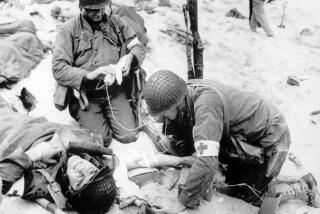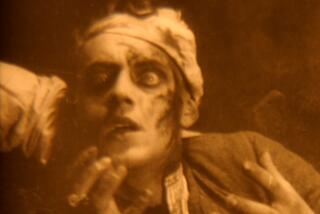Museums of Medical Advances (and Slips)
- Share via
While visiting Las Vegas a week ago, some pals and I stopped in at a drab mini-mall that houses--rather incongruously--a museum devoted to the life of the fabulous Liberace. After oohing and aahing at rhinestone-studded pianos and capes covered with feathers and sequins, we drank some Liberace-brand bottled water and bought this treasure of a book in the gift shop: “Offbeat Museums: The Collections and Curators of America’s Most Unusual Museums.”
What a book! I can’t wait to get to La Crosse, Kan., to take in the Barbed Wire Museum, and to Worcester, Mass., to visit the American Sanitary Plumbing Museum. And next time I’m in Plano, Texas, the Cockroach Hall of Fame is where you’ll find me.
The book isn’t brand new, and attracted some notice upon its publication in 1997. We were struck, though, by how many of the listed museums have medical or biological themes, and couldn’t resist sharing.
There’s the National Museum of Dentistry (Baltimore), where you can see George Washington’s false teeth and a 6,000-year-old toothbrush made of twigs and roots. (That reminds me--I really must get a new brush.)
There’s the Museum of Menstruation (Hyattsville, Md.), where you’ll learn that sanitary pads were invented by nurses during World War I using surgical bandages; the Glore Psychiatric Museum (St. Joseph, Mo.), with displays of barbaric equipment used for subduing patients in the psychiatric hospitals of yesteryear; and the Country Doctor Museum (Bailey, N.C.), where you can see Civil War surgical tools, portable medicine chests, bloodletting instruments and containers for carrying those oh-so-handy leeches.
Philadelphia’s Mutter Museum houses all kinds of oddball surgical specimens--a tumor removed from President Grover Cleveland’s jaw, conjoined livers from Siamese twins--while a ramble through the International Museum of Surgical Science (Chicago) features an iron lung for polio patients, an assortment of surgically removed bladder stones and a big bone-crushing instrument that was used to correct bowlegs in children.
The Hallowed Halls of Quackery
But topping my personal list--higher even than the duck decoy museum in Havre de Grace, Md., or the museum of bathroom tissue in Madison, Wis.--must be the Museum of Questionable Medical Devices in Minneapolis.
Here, says the museum’s Web site (https://www.mtn.org/quack/) is “the world’s largest display of what the human mind has devised to cure itself without the benefit of either scientific method or common sense.” It’s stuffed to the gills with contraptions on loan from the American Medical Assn., the U.S. Food and Drug Administration and others.
Take the Psycograph, a machine that was popular in the early 1900s. Borrowing from phrenology--a debunked scientific theory proposing that the shape of the head is a window into the personality--it consisted of a hat-like dome with protruding screws and wires. These measured bumps on the wearer’s head, and then the machine spat out a readout of the wearer’s various character traits, from “deficient” to “very superior.”
The Foot Operated Breast Enlarger Pump--circa 1976--intrigues us too: Suction cups are placed over the breasts and activated by pumping with a foot pedal (they caused bruising and not much else). So does the G-H-R Electric Thermitis Dilator, or prostate warmer of 1918 (let’s not get into how people used this thing).
On appearance alone, though, the Micro-Dynameter comes out tops. Built in the 1960s and looking like something out of a mad-scientist horror movie, it was touted as capable of diagnosing a wide array of diseases. The FDA begged to differ and in 1963 seized hundreds of the machines. The FDA called the Micro-Dynameter “a peril to public health because it cannot correctly diagnose any disease.” In experiments, in fact, it couldn’t even differentiate between a living body and a corpse.
More to Read
Sign up for The Wild
We’ll help you find the best places to hike, bike and run, as well as the perfect silent spots for meditation and yoga.
You may occasionally receive promotional content from the Los Angeles Times.






